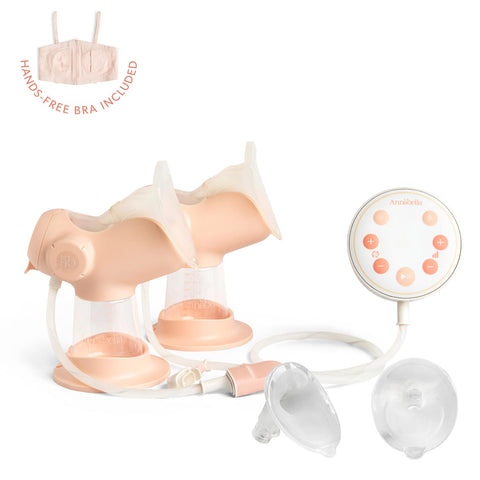Introduction: Fostering the Bond of Recognition
As a parent, witnessing the moment your baby recognizes you is an unparalleled joy. It marks a significant milestone in your journey together, reflecting the deepening bond and attachment between you and your little one. But understanding when and how this recognition occurs, as well as actively participating in the process, can enrich the connection between you and your baby. From the earliest days of sensory exploration to the development of emotional bonds and social interactions, every stage of your baby's recognition journey is a testament to the profound connection that binds you together.
Newborn to Three Months: Building Blocks of Recognition
During the newborn to three-month phase, your baby's sensory experiences lay the foundation for recognition. Here's how you can nurture this early stage:
-
Enhanced Smell Recognition: Your baby's sense of smell plays a crucial role in early recognition. Maintain close physical contact with your baby, especially during feeding and cuddling sessions, to strengthen this bond. Your natural scent, coupled with the comforting aroma of breast milk, creates a reassuring olfactory connection that fosters a sense of security and familiarity. Example: Place a worn item of your clothing near your baby's crib or bassinet to provide them with a familiar scent while they sleep.
-
Auditory Awareness Activities: Engage in interactive activities that stimulate your baby's auditory senses, such as talking, singing, or reading aloud. Your melodic voice serves as a beacon of reassurance, guiding your baby's journey to auditory recognition. Incorporate familiar sounds and soothing melodies into your daily routine to deepen this bond and promote language development. Example: Create a personalized lullaby or sing a favorite song to your baby during quiet moments or bedtime rituals.
-
Visual Stimulation Techniques: While newborns have limited visual acuity, they are drawn to contrasting patterns and shapes. Use visually stimulating objects, such as black-and-white images or colorful toys, to capture your baby's attention and encourage visual exploration. Make eye contact and smile often to establish a visual connection and reinforce your presence as a primary caregiver. Example: Hang a mobile with high-contrast images above your baby's crib to provide visual stimulation during awake periods.
3-6 Months: Strengthening Visual Recognition
As your baby enters the three to six-month stage, their visual acuity improves, allowing for greater visual recognition. Here's how you can support this developmental milestone:
-
Encourage Eye Contact: Foster eye contact during face-to-face interactions with your baby. Maintain a warm and engaging demeanor, using exaggerated facial expressions and smiles to capture your baby's attention. These shared moments of visual engagement deepen the bond between you and your baby, reinforcing your identity as a trusted caregiver. Example: Play games like "peek-a-boo" or "so big" to encourage eye contact and social interaction.
-
Utilize High-Contrast Stimuli: Introduce visually stimulating objects with high-contrast patterns into your baby's environment. Black-and-white images, colorful mobiles, and contrasting toys attract your baby's interest and promote visual tracking skills. Encourage your baby to explore their surroundings and interact with these visual stimuli to enhance recognition and cognitive development. Example: Place a black-and-white picture book in your baby's line of sight during tummy time to encourage visual exploration.
6-12 Months: Emotional Connections and Cognitive Development
During the six to twelve-month period, your baby's recognition journey evolves to encompass emotional bonds and social interactions. Here's how you can nurture this stage:
-
Establish Predictable Routines: Create consistent daily routines and rituals that involve close interaction with your baby. Whether it's feeding, bathing, or bedtime, predictable routines provide a sense of security and comfort for your baby. Your presence and consistent caregiving practices reinforce your role as a nurturing and dependable caregiver, fostering a strong emotional connection. Example: Establish a bedtime routine that includes cuddling, reading a bedtime story, and singing a lullaby to create a sense of security and familiarity before sleep.
-
Promote Responsive Communication: Respond promptly and sensitively to your baby's cues and signals. Acknowledge your baby's vocalizations, gestures, and facial expressions with warmth and attentiveness. By engaging in responsive communication, you validate your baby's feelings and needs, strengthening the bond of trust and recognition between you and your baby. Example: Mirror your baby's facial expressions and vocalizations to demonstrate empathy and encourage reciprocal communication.
12 Months and Beyond: Continued Growth and Exploration
As your baby approaches their first birthday and beyond, their recognition abilities continue to develop alongside their cognitive and social skills. Here's how you can support their ongoing growth and development:
-
Encourage Social Play: Engage in interactive play and social activities that promote reciprocal communication and cooperation. Playful interactions such as peek-a-boo, pat-a-cake, and imitation play foster shared experiences and reinforce your bond of recognition and connection. Example: Arrange playdates with other infants or participate in parent-child classes to encourage social interaction and peer learning.
-
Facilitate Self-Recognition: Introduce activities and materials that encourage self-recognition, such as mirrors and photo albums. Encourage your baby to explore their reflection and point out familiar faces in photographs. By promoting self-awareness and identity development, you deepen your baby's understanding of themselves and their relationship with you as their loving caregiver. Example: Place a child-safe mirror at your baby's eye level and observe their reactions as they discover their reflection.
Conclusion: Cherishing the Journey
The journey of recognition is a dynamic and multifaceted process that unfolds gradually throughout your baby's early development. By nurturing sensory experiences, promoting visual engagement, fostering emotional bonds, and embracing developmental milestones, you play a pivotal role in guiding your baby's journey to familiarity and connection. Cherish each moment, celebrate every milestone, and revel in the incomparable joy of being recognized by your little one—a bond that grows stronger with each passing day. Unlock the secrets of sensory exploration and nurture your baby's bond with Annabella's double breast pump. Our hands-free double breast pump makes feeding easier, giving you more time for the special moments that foster a deeper connection between you and your baby.







